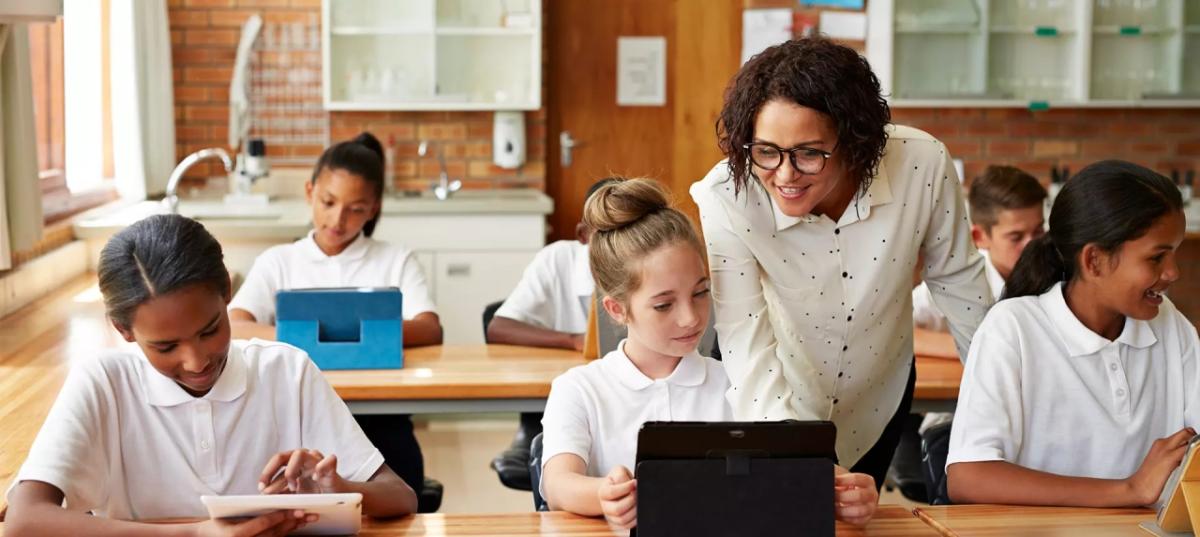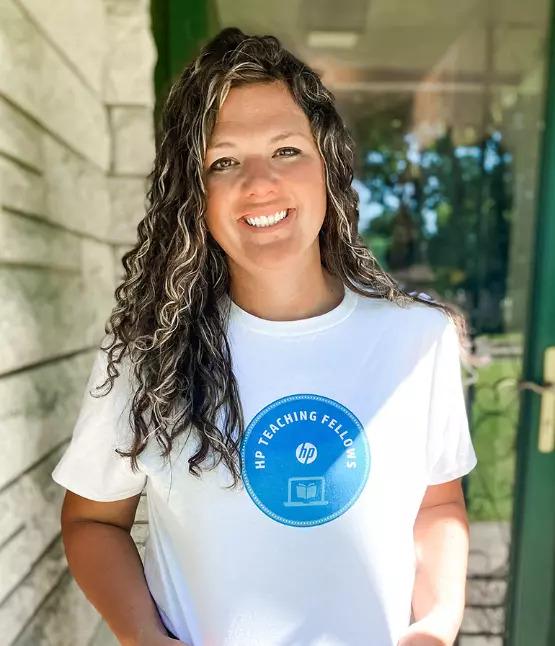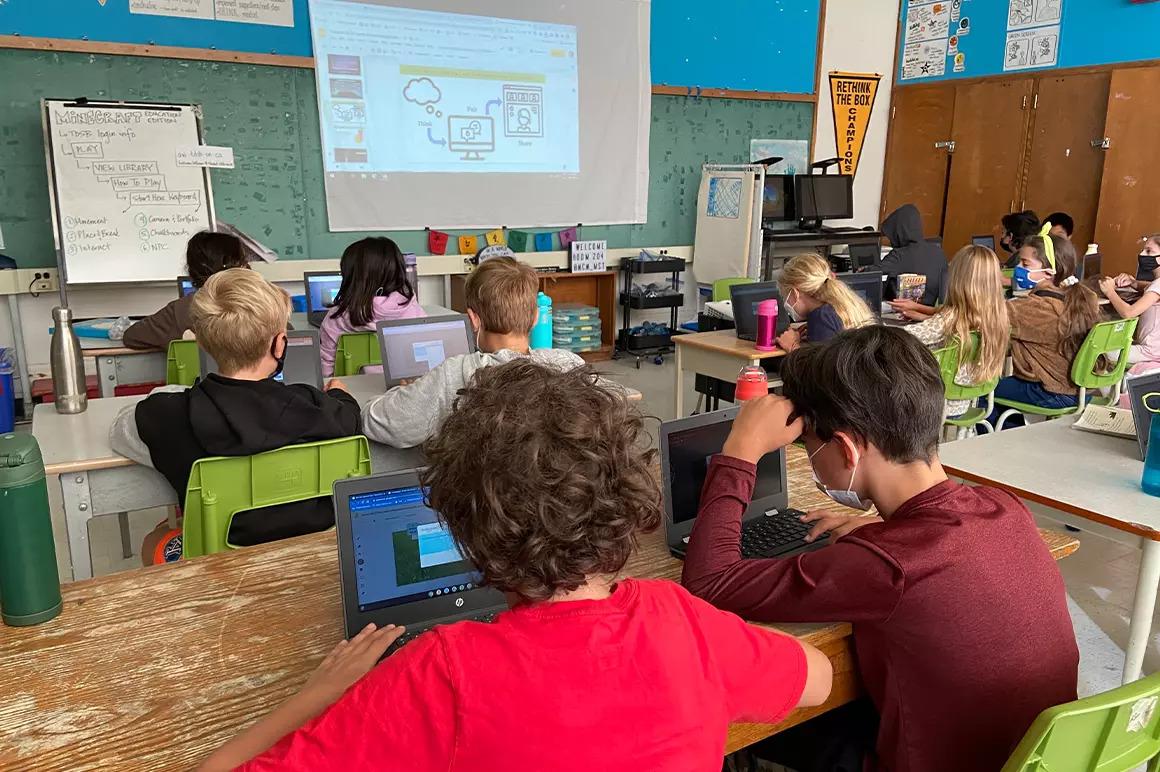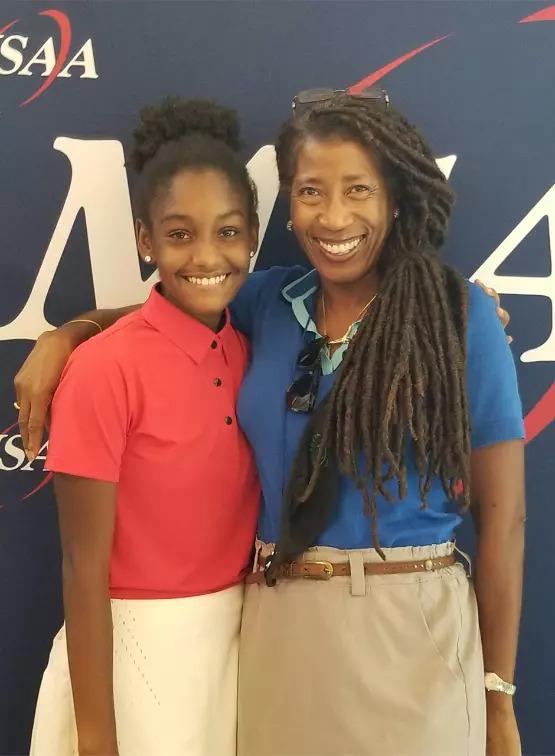Why Teaching Tech to Teachers Is More Important Than Ever
As educators build their own technology skills, students benefit from new ways to learn, collaborate, and create.
By Deborah Lynn Blumberg
For a recent class project, Zélia Capitão-Tavares, a technology coach and 4th- and 5th-grade teacher at McMurrich Junior Public School in Toronto, Canada, connected students with guest authors through Zoom. Students wrote their own mystery stories and uploaded them to cloud-based document sharing and received feedback from Capitão-Tavares and the authors. Then, students digitized their stories with Book Creator, pairing words with images, and sharing their final products with parents. “It gave students a sense of autonomy,” Capitão-Tavares says. “They took charge of their writing.”
Like teachers around the country and the world, Capitão-Tavares found new ways to use technology in her day-to-day teaching by necessity during the pandemic’s stretch of distance learning. Now, as the new school year starts, that experience is influencing how teachers approach in-person learning as well.
RELATED: Want to stop climate change? Educate girls.
Drew Williams, an instructional coach at Lone Star Middle School in Nampa, Idaho, helps teachers incorporate new technology into their classrooms and says that even though students are attending in-person, tech-enabled learning experiences still have an important place. That’s why she’s helping teachers embrace blended learning — combining digital and in-person experiences — to give students more independence and make classroom management more efficient.
“With technology, it’s not all or nothing,” says Williams. “It’s about how to make learning meaningful. The question to ask is, where does it make sense to use a tool to maximize what you’re doing in the classroom?”
One recent survey shows that nearly 60% of teachers, principals, and district leaders are more willing now to use technology with their students because of their experiences during remote learning. But to do that, educators first have to learn how to use new technology themselves.
Williams — who was selected by HP and Digital Promise as a 2020 HP Teaching Fellow for her innovative use of technology in creating powerful learning experiences — models tools and tech strategies alongside teachers in their classrooms, often co-teaching a lesson to help build their confidence. “A coach can really help,” she says. So can a peer network. Teachers at her school observe each other using technology in the classroom, attend workshops put on by colleagues, and actively participate in an ongoing Microsoft Teams chat for teachers who have questions and concerns about technology.
The Garage talked with HP Teaching Fellows to find out about the digital tools they’re tapping into and how they’re learning about new technologies to bring into their blended classrooms.
Encouraging connection and experimentation
Tara Bova, a library media teacher at Barbara Blanchard Elementary School in Cape Girardeau, Missouri, has always enjoyed trying out new technology in the classroom, but teaching virtually during the pandemic supercharged her desire to experiment.
While teaching third grade last year, she used learning platform Empatico to connect her students with classrooms across the globe. Through video, her students virtually stepped into a classroom in India and learned about their in-class mango tree. Then, Bova’s students used Flip to film a tour of their own school, which they shared with Indian students. As fodder for a writing exercise, she’s taken students on virtual tours of Kenya’s Giraffe Manor and Exuma Beach in the Bahamas, where people swim with pigs.
She’s used Canva’s pre-designed templates for making parent information sheets, Symbaloo for doing project-based research, Mote for making an interactive spelling test, and Edpuzzle for creating interactive video lessons and tracking students’ progress. “It's great because if students are struggling, I can elaborate more in real time,” she says. “This lets me nip misconceptions in the bud right away.”
Twitter has been an invaluable resource to learn about new tools, technologies, and experiences she can bring into her own classroom, she says. For example, Bova follows an ESL educator in Israel who often posts looking for teachers whose students can play online games with her students and create projects together.
This school year, she’s excited to experiment with near-field communication (NFC) tags, or smart tags that, when tapped, open programs on devices. She may place one in the library’s calming corner, for example, where students can tap it to open a calming activity like interactive art app Weave Silk.
“With technology, it’s not all or nothing. It’s about how to make learning meaningful.”
—Drew Williams, instructional coach, Lone Star Middle School
Unlocking new ways to collaborate
Helping other teachers successfully integrate technology into lesson plans is a key part of the job for Valerie Crawford-Meyer, computer science educator and Verizon Innovation Learning School alumni coach at Glades Middle School in Miramar, Florida. She’s become especially interested in how technology can create new ways for students and teachers to collaborate with digital whiteboard tools. Another example: a sustainability lesson in which educators created a Minecraft world where students from across classrooms worked together to set up recycling and composting stations.
“I’m a strong believer that collaboration when done correctly is very powerful,” Crawford-Meyer says, noting that along with building their skills, collaborative activities can support students’ social and emotional learning.
Other critical tools she’s used include a webcam that taps into artificial intelligence as it films teachers giving lessons in classrooms. It’s a tool that could continue to come in handy if classes or parts of classes are sent home because of COVID-19.
Teachers at Crawford-Meyer’s school meet regularly to discuss their best tech ideas, and Crawford-Meyer has also filmed lessons of teachers weaving tech into their teachings to share on her private YouTube channel.
This year, she’s looking forward to incorporating more virtual reality and augmented reality into lessons using VR goggles and a MERGE cube, a device that lets students touch and interact with 3D content. For example, a student could stand inside a cell to identify its parts rather than examining a diagram on a flat sheet of paper.
Streamlining classroom management
Along with storytelling tech tools, Capitão-Tavares, in Toronto, used learning innovation platform D2L Brightspace during distance learning to make classroom management easier. The ability to put daily agendas, weekly activities, and links to resources online reduced the number of parent emails she received and gave her more time to focus on instruction. Capitão-Tavares also created a class Twitter account to showcase student projects and accomplishments.
When school shut down last fall because of COVID-19, “we didn’t miss a beat,” Capitão-Tavares says. “That’s the power of technology.”
As part of an entrepreneurial project called Business Day, students used cloud-based slideshows to design animal playing cards, which they sold and then donated proceeds to charity. They also built a website that featured all student Business Day projects.
Capitão-Tavares says teachers at her school have opportunities to learn about new technology through their district’s drop-in lunch learnings, after-school webinars, and virtual drop-in office hours.
With any tool, she says, ask, “Is it accessible and easy to use? Does it build community, enhance engagement, and amplify students’ voices? If it hits all five marks, it’s probably a good one to try.”






